







|
Many unique creatures roam the Fluorescent Zone.
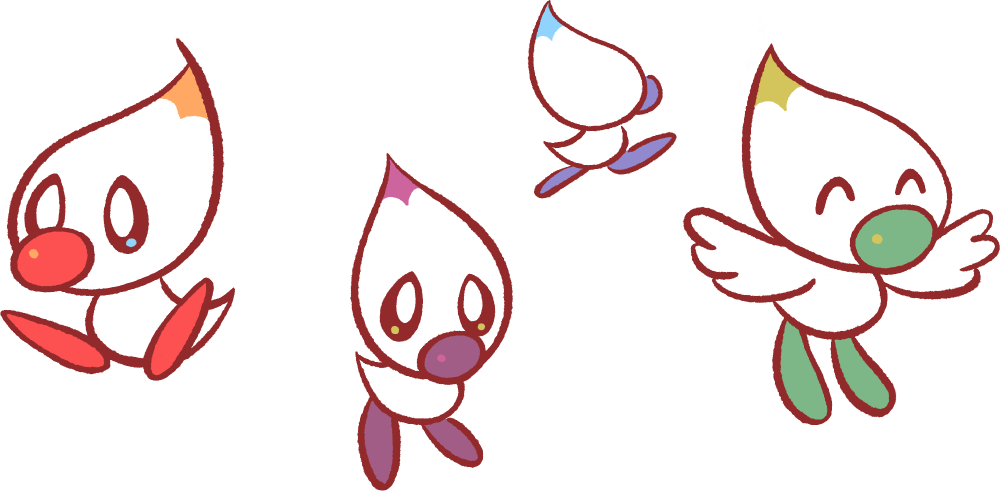 The Qulo (kyoo-low) are a common race to spot throughout the Fluorescent Zone, but that
doesn't make them any less special or important. In Zones 2 & 3 they may be seen leading many kinds of lifestyles,
from high-ranking nobility to common workers, and in Zone 1 they appear on all manner of popular toys, games and TV programs
for children. Though they tend to be of few words (which come out sounding rather nasal), they are easy to get along with and known for being adaptable
and determined. Their feet can also release a sticky film allowing them to climb up surfaces, eg. trees. Orange-tipped Qulos are the most common variety, but they have been spotted in an assortment of colors.
 The catlike Poffles may appear demure and biologically simplistic, but they are essential to the ecosystem of planet Cottonwheel, as they harmonize emotions in the air amongst civilians: it is due to this fact that Cottonwheel ranked highest on the "Happiest Planets" survey (conducted in 2018). Indeed, they somehow are able to foster happiness and goodwill amongst societies simply by being in their presence. They are also happy to be treated like pets, as they may bond to specific individuals of their own accord. Pet Poffles are good luck charms, sure to grant you happiness and good health throughout your life!
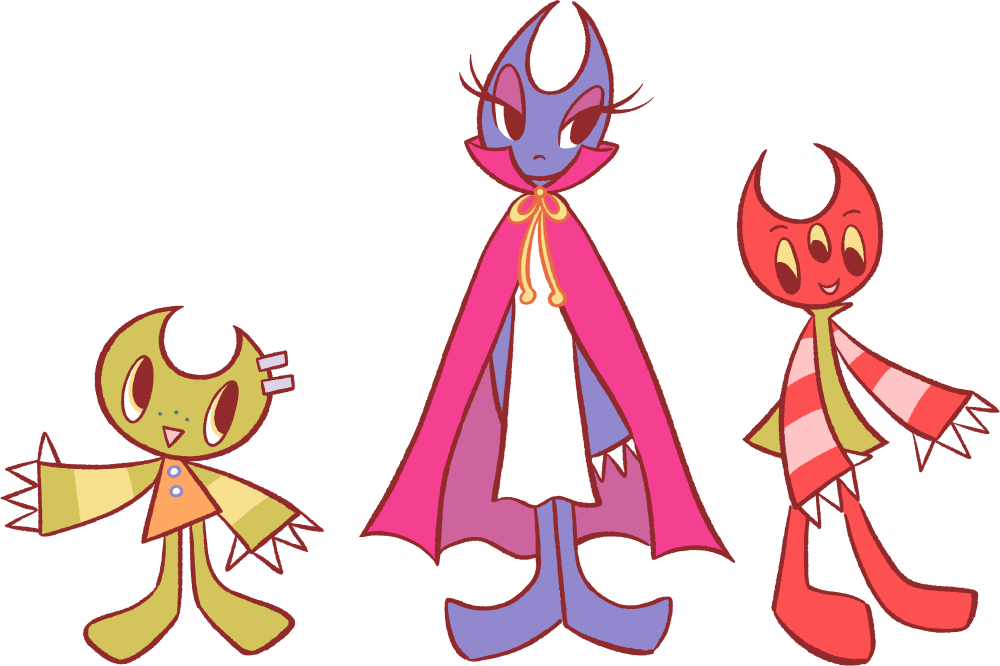 Cresha (kree-sha) people can only be born on moons, but many will migrate to planets afterwards. Their births are a spectacular event to witness, involving the heating up of moondrops and starfall in a colorful burst. Indeed, the birth of a Cresha is an event people from far and wide will sometimes gather for as though it was a fireworks show or meteor shower.
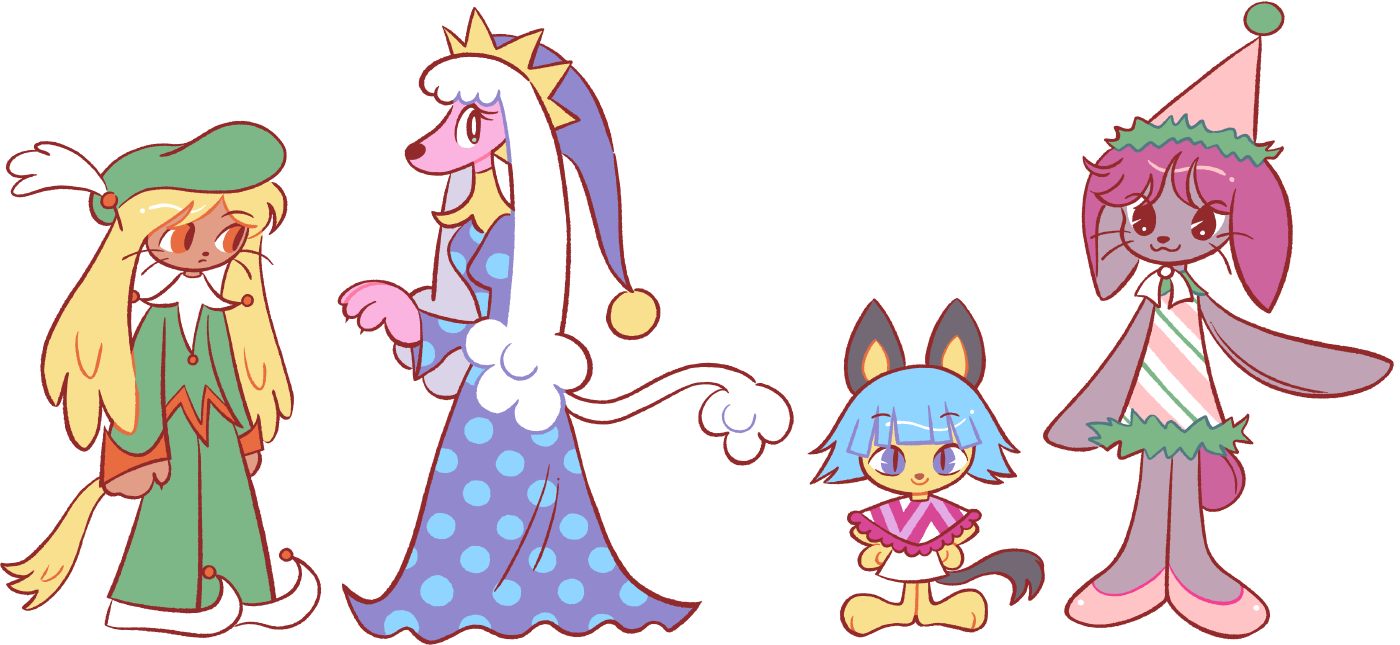 The Manya (mawn-yah) are a highly diverse species that are most commonly found on planet Eltrya of Zone 2, natively from the kingdom of Majonia. The most noteworthy thing about Manyas is their highly televised magical abilities. Visual distortions, healing powers, levitation and other abilities that have yet to be documented have been enacted by Manyas for centuries. Not all of them possess these attributes or may have only very rudimentary skills, however; meanwhile, advanced practitioners of magic are often made into celebrities, whom may remain local legends or become famous in other Zones.
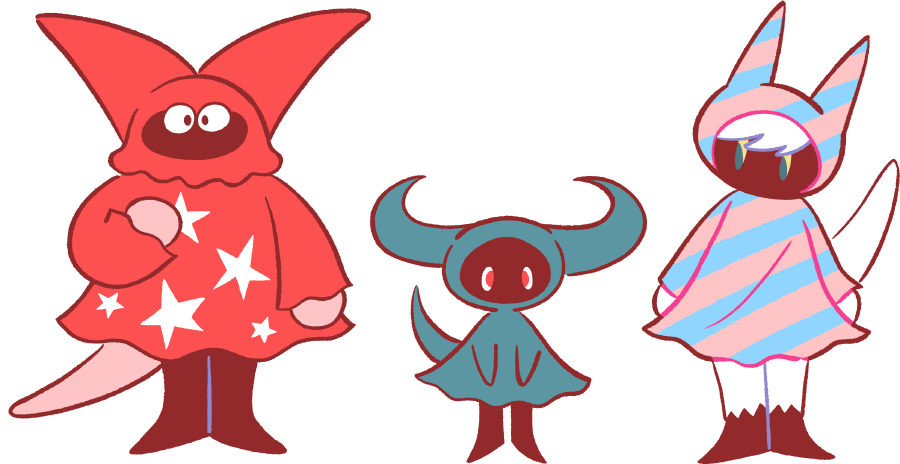 The Odol (oh-dole) - coloquially referred to as "the hooded kind" - are the second most prominent species on Eltrya after Manyas, living primarily in a southern kingdom called Odoken. They are a shy and retiring kind of
people, but wonderful storytellers if you can get them to open up. Not much is understood about their biology because they hate being touched, but all of them sport horns and lizard-like tails.
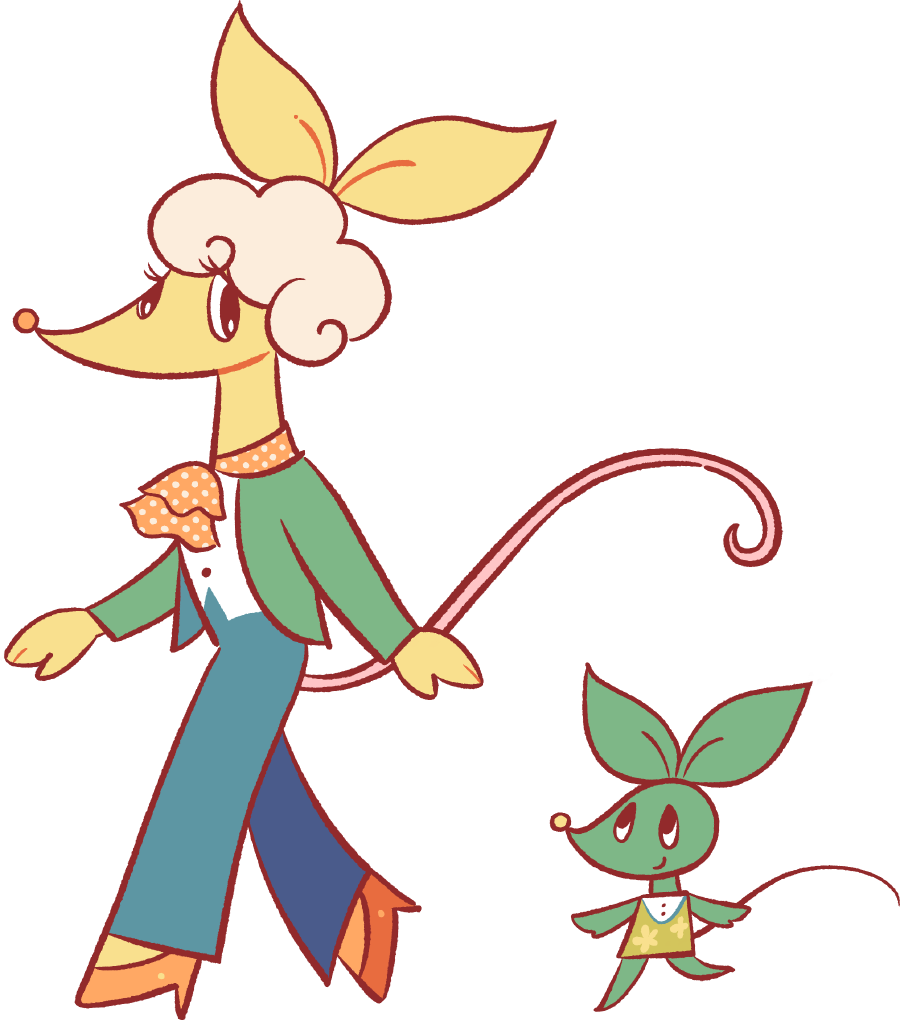 The Kelowek (kellah-wik) have been seen on only a few planets. To make more comparisons with Zone 1's animals, they bear resemblance to some mix of kangaroos and mice, and are typically recognized for their long necks; ancient Keloweks primarily ate tree fruits, so this surely aided them in their diet. In present times, Keloweks are likely to attain high-ranking social positions - the king and princess of Majonia are Keloweks, after all!
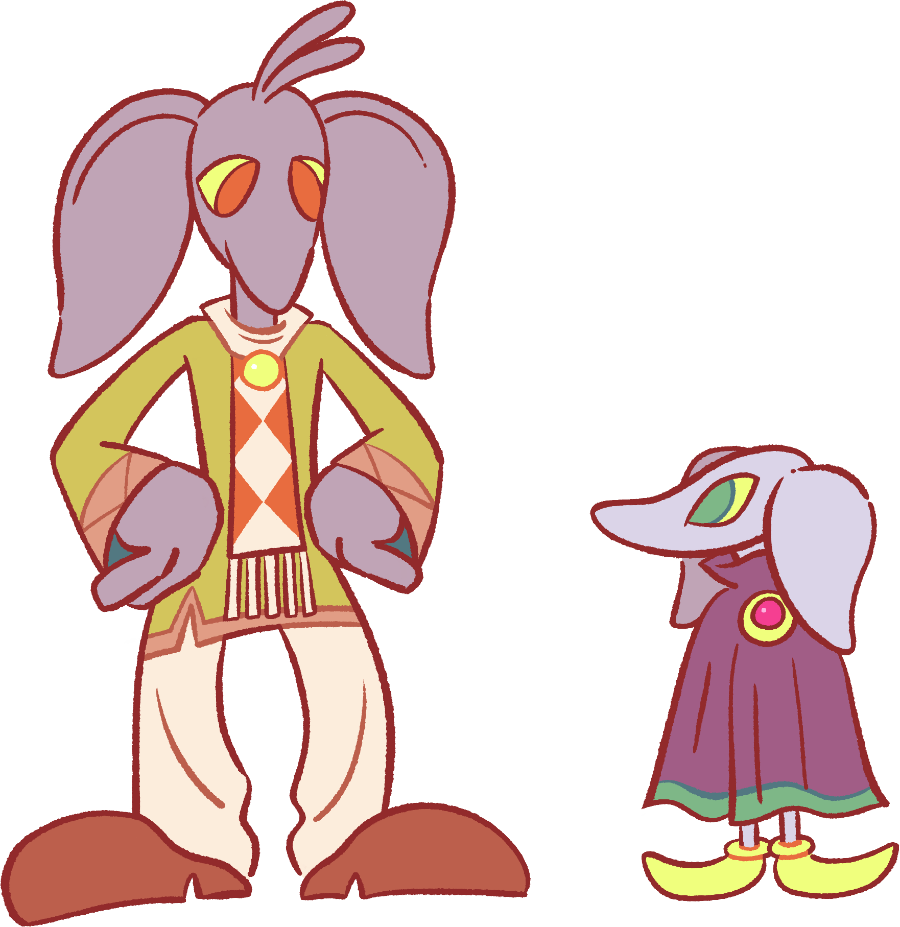 Part of the same genus as Keloweks, the Zellyan, by contrast, are a very poor people in present times, being native to planet Levia which was largely decimated by a raging civil war in the 1500s. Though many have stayed behind and partnered with other groups (such as the Odol) to aid in its ongoing rebuilding effort, others have fled to different planets such as Eltrya to seek their fortunes. In the hopes of not losing what they have left of their people, many Zellyans pass along their history and culture through oral tradition, and there are many libraries and museums in Levia today. We all hope the Zellyans and other people of Levia will flourish triumphantly once again.
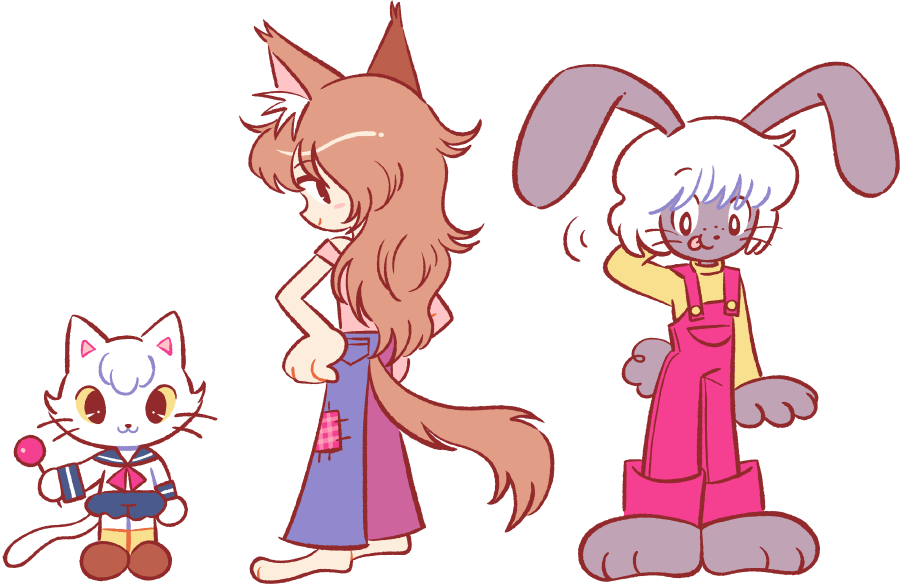 Beast people is the accepted term for the wide range of beings whom genetically derive from Earth animals. How close they are to their derivative species varies significantly and some scientists measure it in terms of degrees; for instance, a cat person 1 degree removed from their bonded species may still sometimes walk on all fours and speak only occasionally, whereas 2 degrees removed is fully bipedal and capable of fluent speech; 3 degrees removed may take on further human proportions and mannerisms, and by roughly 4-5 degrees removed, beast people usually won't bear any more resemblance to their bonded species beyond ears, tails, and possibly paws. It is unknown how or why they exist, as they are evenly peppered throughout the Fluorescent Zone with no ascertained point of origin, but just as with the other species listed here, they may only roam openly in the Hidden World (Zones 2 & 3).
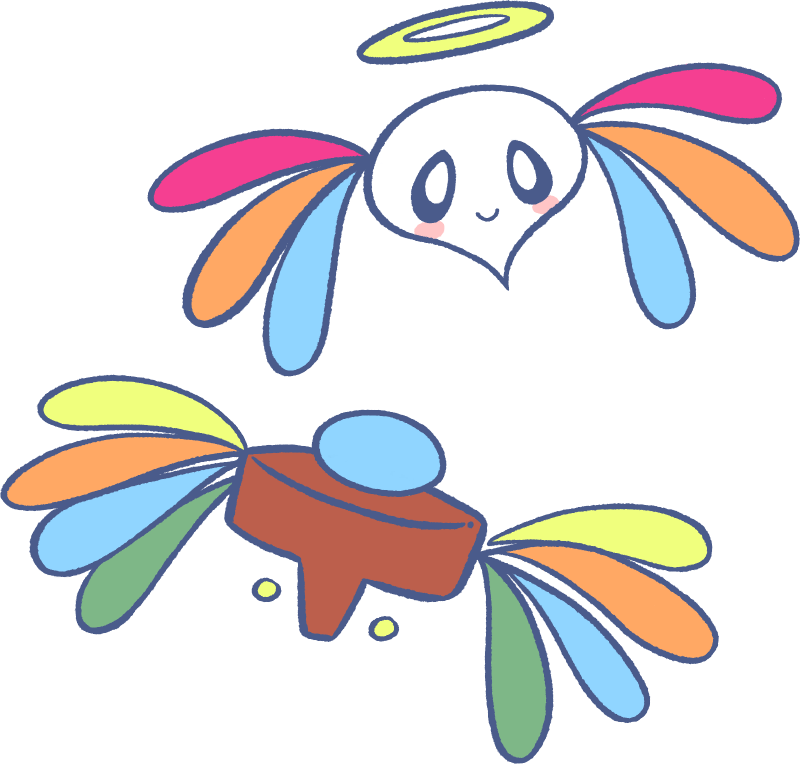 Glyphs were regarded by earlier Hidden World civilizations to be some sort of angels. Many thought they had no language or culture of their own because they kept it to themselves and were only seen by others briefly in the sky depending on atmospheric conditions. They are easily spotted on the rare chance they are seen for their
iridescent wings and ghostlike translucence. If a Glyph approaches you, you are said to have good luck for
the rest of your days.
|
All text and images are © LEIRIN and may not be used or redistributed without permission.